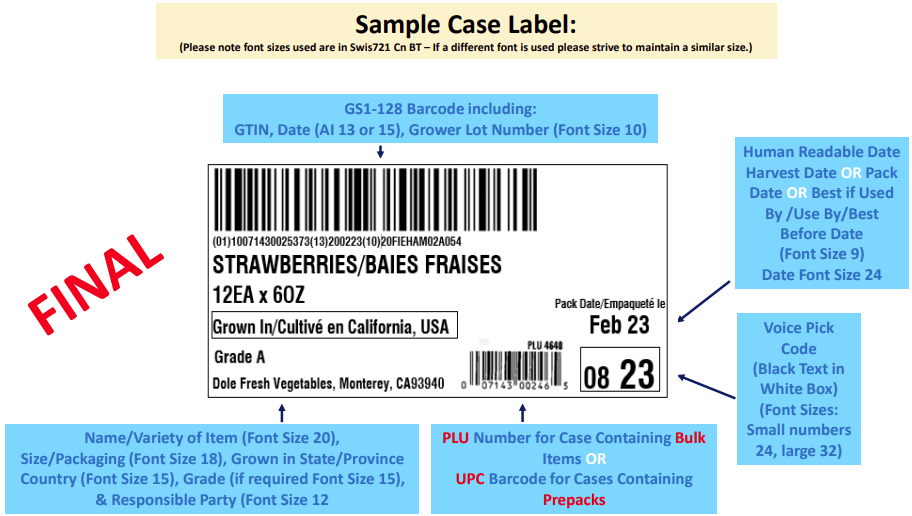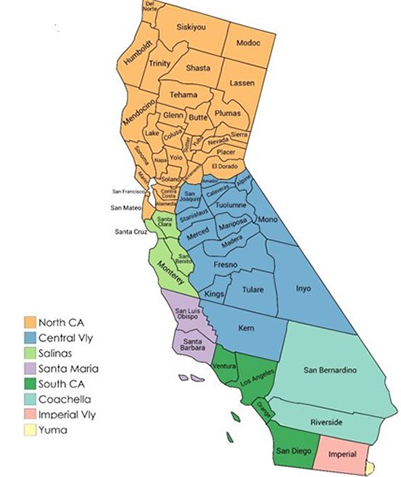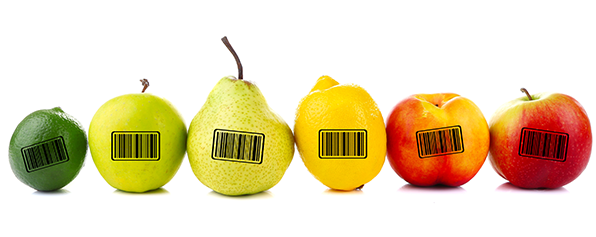The Produce Traceability Initiative (PTI), sponsored by the Canadian Produce Marketing Association, GS1 US, The Produce Marketing Association (PM), and United Fresh, aims to bring accurate, electronic traceability to every step of the food supply chain. Last week they announced new standards for traceability and labelling in the US and Canada in advance of the 2020 Food Safety Modernization Act (FSMA) draft to be released this September.
Harmonized Case Labels
The PTI’s traceability labelling focuses primarily at the case level rather than on individual retail containers. Based on industry wide cooperation, the new harmonized case label was designed to be a standard acceptable in both the US and Canada. Following a “label once, use twice” model, the new label standards include compliance with both American and Canadian consumer standards, including french language labeling for products that will be shipped across the border.
In coordination with the new harmonized case labels, the PTI has also introduced a revised Best Practices for Formatting Case Labels guideline. The original best practice document was released in 2009 and has undergone a number of revisions since. The entire revision history and updated best practices guidelines are available to the public here.

“Grown In” Information
Additional guidelines for romaine lettuce have also been added . While “grown in” information in the US and Canada require that the province or state be declared, in the case of romaine the label should specify the specific region in which it was grown. Region definitions were created out of the 2019 Romaine Recall’s Romaine Task Force, and include specific areas such as Salinas California, as well as more general regions like “Northern California”. These labelling recommendations are currently voluntary, though recommended by the FDA.
Produce Traceback Template
Another initiative from the Romaine Task Force recently finalized by the PTI is the new Produce Traceback Template, a spreadsheet template designed to transmit traceability information to regulatory agencies in the event of a recall or trace back investigation. Collating company information, processing, packing and transformation information along with receipts and shipping data, the template was developed in cooperation with the FDA.

Croptracker’s robust traceability features, like the mock recall report, allow growers to see the entire lifecycle of a product and to trace forward and backward through the entire lifecycle of a product. Croptracker users can generate this data in an easy to follow chart that is responsive, easy to read, and that allows you to see more information in the event of a recall or investigation.
Interested in learning more about Croptracker? Learn more about our Farm Management Software, or book a demonstration to schedule a meeting with our product experts.
And as always, if you're ever stuck, never hesitate to e-mail us at support@croptracker.com or Live Chat with us by clicking the green speech bubble ![]() in your bottom right-hand corner. We're always happy to help you make the most of Croptracker to make your farm more efficient, safer, and more profitable!
in your bottom right-hand corner. We're always happy to help you make the most of Croptracker to make your farm more efficient, safer, and more profitable!


